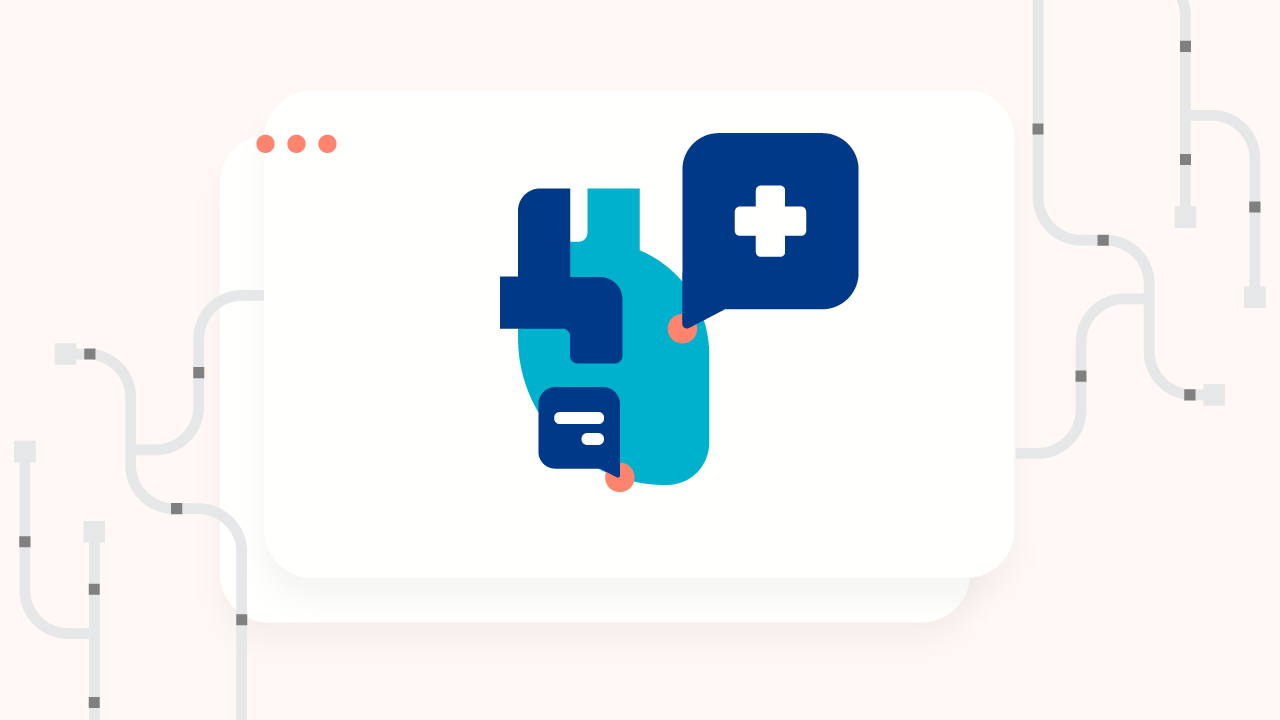What’s actually holding remote patient monitoring back in Sweden?
The number of people aged 85 and up is expected to double by 2050. If we don't act fast, our healthcare system—already struggling with a lack of care workers and an aging, sick population—will be completely overwhelmed. Fortunately, we've seen the power of telehealth during COVID-19, and remote patient monitoring is now the next logical extension to the digital healthcare journey. This type of technology has the potential to improve healthcare outcomes substantially and save everyone a lot of time and money.

What is remote patient monitoring and why do we care?
Remote patient monitoring allows patients to use digital technology to measure their values wherever they are. Patients become co-creators of their care, with increased knowledge, security, control and participation in their own care journey. Other benefits from RPM implementations include:
- Effective preventive healthcare and improved clinical outcomes
- Reduced readmissions and avoidable visits to healthcare facilities
- Increased efficiency and enhanced work environment for clinicians
Why isn’t remote patient monitoring catching on like it should?
In Sweden, there are already loads of RPM pilots that are doing really well…but they’re small. Despite the rising demand from patients and healthcare providers, and engaged project managers in place to lead these pilots, they rarely include more than a couple of hundred patients even in the most successful regions.
One explanation for the slow adoption of RPMs in general is financial barriers—RPM needs to be financially viable for all stakeholders. Still, in countries like the Netherlands care provider have successfully implemented RPMs on a larger scale despite similar structural challenges, so why aren’t RPMs more widely used in Sweden? Are there other factors that could be at play? Let’s explore two more likely explanations.
1) Many digital solutions are not based on patients’ different healthcare needs
In today’s healthcare world, patients often have multiple chronic conditions and require both acute and episodic, short and long term care throughout life. Digital systems, on the other hand, are typically designed to address one or perhaps two conditions. This makes it challenging for patients and providers to piece together the complete picture. Patients struggle to know which of the many different applications to use—the same patient might have one application for when they have an acute newly onset problem, another for their first chronic condition, a third one for the second chronic condition, and a fourth for handling their process pre- and post surgery. At the same time, doctors find it difficult to track relevant data scattered across multiple sources.
But things are changing in Sweden. Several regions are recognising the need for a more accessible and comprehensive system where data can be utilised by all care providers, for all patient groups. A centralised ecosystem will make it easier for patients to receive the care they need and for providers to more easily access the relevant information they need to make informed decisions.
2) Scalability is not a priority in implementations
As mentioned, up until today, many RPM implementations have been conducted on a pilot-basis with rather small patient volumes. But how can we extract value from something that requires a large investment (e.g., in new ways of working, personnel and logistics) if it’s not done on a substantial scale? Only when the number of patients enrolled in remote monitoring programs increases can we learn and improve and really reap the benefits of these systems, and only then can the return on investment be realised. Moreover, by including more patients in these programs, more data can be collected from a broader group to ensure better care plans over time and potentially even improve health economic policies.
Organisations that strive to find and implement a telehealth and/or RPM system need to commit to scalability as a long-term goal and have it as a main requirement in their selection. Choosing a full-suite, modular and interconnected system is a prerequisite to achieving scalability. But it’s not enough. Implementations also need to be guided by specialists in tech and medicine—experts with real-world experience in scaling telehealth solutions.
So, how does Platform24 solve this challenge?
Platform24 provides a full-suite telehealth solution—connecting the entire digital journey from a single-entry point, bringing together virtual care and RPM capabilities in one system, and covering all outpatient use cases from acute, episodic, and chronic patients, with one or ten conditions. Our solution includes one front door, self-services (like triage and booking capabilities), digital consultations for patients with HCPs and between HCPs (chat, video and audio), and a modular diagnosis and hardware agnostic RPM system. All parts coexist and are interconnected in one patient and one care provider user interface.
We are the first RPM solution to obtain MDR certification in Europe. Our platform is built and implemented by experienced and passionate tech and medical professionals—ones who know and understand the day-to-day challenges of doctors, nurses, and administrators. Currently, we are working on Sweden’s largest-to-date RPM implementation within first and secondary line of care, in one of Sweden’s biggest regions. Between this ongoing endeavour and our experience as a leading technology supplier of digital care (over >600 implementations in Sweden and abroad), we know what is required both technically and organizationally to ensure successful remote monitoring implementations at scale.
Aleksandra Dennier
RPM Lead / BD Manager (Growth)